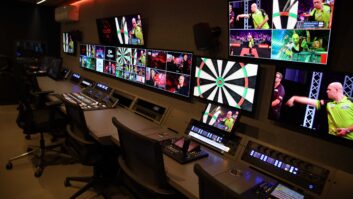Two next generation ultra slow motion cameras were unveiled at NAB. LiveMotionConcept showed off its Antelope MkII unit while NAC was sporting a prototype of its Hi-Motion II camera, writes Adrian Pennington.
While the latter won’t be ready for action until early next year, the Antelope will be out of the blocks shortly.
As with the first iteration, the Antelope MkII is based on Phantom chip technology and is claimed to shoot up to 5,800 frames per second in native HD.
It also features a new remote controller and a specially designed broadcast OCP.
“It is a total redesign inside and out. We are using the Phantom V641 chip, which provides two permanent HD SDI outputs (live and replay), two extra stops, plus tally and return signals. This is the only real broadcast ultra slow motion available now,” claimed LMC’s CEO, Felix Marggraff.
The product is in its final stages of preparation and is ready to ship shortly. A version was trialled at the Biathlon in Norway for NRK “with great success” said Marggraff, “but it was a stripped down version. The real MkII has not been used officially yet. We had great success at the Vancouver Games so hopefully Antelope MkII will convince our friends at OBS to use it in London for the 2012 Olympics.”
The NAC Hi-Motion II is also being targeted at the London Games. Among its new features will be two extra stops of light, continuous live record and replay; full integration with EVS XT-LSM; a True Flicker Correction function; and doubled memory capacity to 96GB.
“One of the key differences the Hi-Motion has over the competition is that it is designed as a broadcast camera and fits easily into an OB,” said Andy Hayford, Digitial High-Speed Manager of resale partner Arri Media. “It has three sensors on an optical block and its colourimetry is similar to a Sony or Grass Valley camera. Other ultra motion cameras are based on large single sensor Vision Research cameras, which were originally made for missile testing or other applications.”







